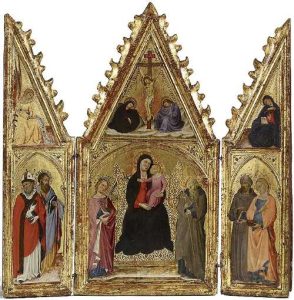Ceylon vs Cassia Cinnamon
The Secret Revealed! Things to know about Ceylon vs Cassia Cinnamon
You won’t believe how worth cinnamon was in the ancient world, but did they have enough information on Ceylon vs Cassia variety?…
According to Pliny the Elder, a Roman pound (327 grams [11.5 oz]) of cassia, and cinnamon (serichatum), cost up to 1,500 denarii which is equal to the wage of fifty months’ labor. Cinnamon was too expensive to be commonly used on funeral pyres in Rome, but Emperor Nero is said to have burned a year’s worth of the city’s supply at the funeral of his wife Poppaea Sabina in AD 65

Native to Ceylon (Sri Lanka), it is known as, Cinnamomum zeylanicum dates back in Chinese writings to 2800 B.C., and is still known as kwai in the Cantonese language today. Its botanical name derives from the Hebraic and Arabic term amomon, meaning fragrant spice plant. Ancient Egyptians used this in their embalming process. From their word for cannon, Italians called it canella, meaning “little tube,” which aptly describes cinnamon sticks.
In the first century A.D., Pliny the Elder wrote off 350 grams of cinnamon as being equal in value to over five kilograms of silver, about fifteen times the value of silver per weight.
Despite the vast history and use of cinnamon, not every kind in the market is the same; there are two main types namely Cassia Cinnamon and Ceylon Cinnamon.
Ceylon variety is lighter in color than cassia, which typically comes from Indonesia, China, and other countries. Cassia cinnamon tastes “stronger and hotter,” says Ana Sortun, executive chef of Oleana restaurant in Cambridge, Mass., while Ceylon one is full of “lighter, brighter citrus tones.”

What is the big factor behind this Ceylon vs Cassia Cinnamon?
Dangers of Coumarin in Cinnamon?
Despite its sweet flavor and pleasant aroma, coumarin is a chemical that can have serious effects on health when consumed in high amounts. In fact, high doses have been linked to liver damage, impaired cognitive development, and even cancer formation in both animal and human studies
How does a little amount of Coumarin help you?
Coumarin is a chemical compound found in a variety of different plants. It has a fragrant, sweet odor and flavor and is often added to fragrances and cosmetics. It’s also used as a precursor to anticoagulant medications, such as warfarin and Coumadin, which help promote blood circulation and prevent the formation of blood clots.
In 1954, the U.S. Food and Drug Agency banned the use of coumarin as a food additive due to reports of its potentially harmful effects on health in animal studies
The big factor behind the Ceylon and Cassia Cinnamon is the amount of Coumarin.
How much coumarin in
Ceylon vs Cassia Cinnamon
?
Cassia (or regular) cinnamon is a rich source of coumarin. The coumarin content of ground Cassia cinnamon may range from 7 to 18 milligrams per teaspoon (2.6 grams), while Ceylon cinnamon only contains trace amounts of coumarin

In contrast, the study found Ceylon cinnamon to contain “hardly any” coumarin. The study refers to Ceylon cinnamon (Cinnamomum Verum) as Cinnamomum zeylanicum, but these are actually two scientific terms for the same type of cinnamon. This research paper on cinnamon has a great explanation for the variance in name: “The first one is Cinnamomum verum, translation ‘true cinnamon’. It is also called Sri Lankan or Ceylon cinnamon. Sri Lanka is the only regular supplier of true cinnamon bark and leaf oils. C. Verum’s older botanical name, Cinnamomum Zeylancium, is derived from Sri Lanka’s older name, Ceylon.”



Pingback: Medical Benefits of Ceylon Cinnamon - Green Forest Lanka